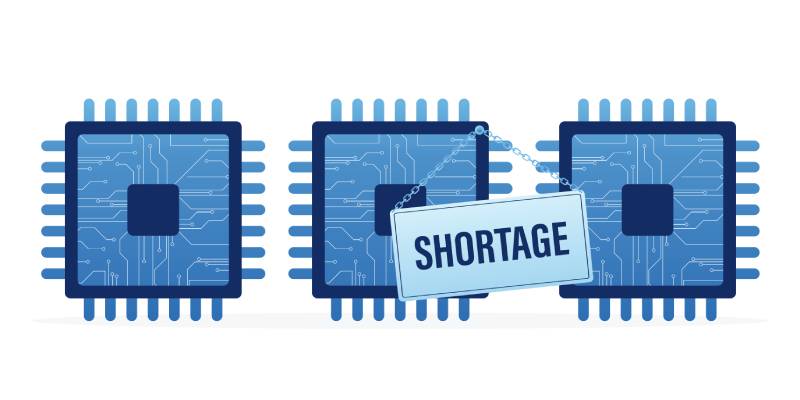In the past couple of years the words “COVID-19 pandemic” have often been followed by the phrase “supply chain problems.” As the world locked down in 2020, we saw – and continue to see – far-reaching challenges due to disruptions in the global flow of goods. Here’s a small sampling:
- Used car prices skyrocketed as chip shortages slowed automotive manufacturing lines to a crawl, resulting in a shortage of new cars.
- Many retailers are posting lower quarterly earnings, pointing to supply chain disruptions as a major cause.
- In early 2022, the shutdown of a baby formula plant that produces 20% of the US supply of formula has caused parents to panic.
- The war in Ukraine is upending global food supplies, as millions of tons of grain remain trapped in the country.
The lesson here: When supply chains don’t function smoothly, all hell can break loose.
For example, think about the current dilemma facing two key industries, dependent on talent acquisition:
- Airlines canceling thousands of flights due to staffing shortages
- Retail, hospitality, and restaurant players scrambling to staff up, just to keep the doors open
I am quite sure there is a lesson that can be learned and applied to how companies acquire talent. Let’s look at the talent acquisition (TA) problem and how it can be fixed.
What is a supply chain, anyway?
The supply chain process has four core components:
- Supply planning
- Demand planning
- Sales and operations planning
- Supply management
Supply chain problems are often the result of poor supply chain management. Here’s a textbook definition: “Supply chain management is the management of the flow of goods and services and includes all processes that transform raw materials into final products. It involves the active streamlining of a business’s supply-side activities to maximize customer value and gain a competitive advantage in the marketplace.”
When raw materials – computer chips, bicycle components, grain, you name it – aren’t readily available, products can’t be made. Some of the worst recent supply chain challenges have been caused, in fact, by shipping problems; during the pandemic goods have sat on cargo ships for weeks, waiting to be unloaded as COVID restrictions and labor shortages reduced port traffic to a fraction of normal levels.
The supply chain problem with TA
Just as no company would intentionally leave acquired goods stranded on a cargo ship, no company should source candidates only to consign them to a “black hole” of a database, never to be interacted with again. But that’s what happens when talent acquisition processes treat job seekers as disposable; every time a requisition is generated, companies spend new dollars to post the job and source new candidates. The candidates who don’t get the job are effectively forgotten.
I believe it’s time for TA professionals to think about, and manage, the talent sourcing process as supply chain, to move “raw materials” (applicants) through a candidate-focused process that adds value, delivering “finished products” (top candidates) to customers (hiring managers) faster. Here’s what TA supply chain components might look like:
- Supply planning = the current job seeker marketplace
- Demand planning = your staffing plan
- Sales and operations planning = your recruiting process and tools
- Supply management = your CRM process and tools
At many companies these components are loosely coupled, at best. Worst case, they operate in a completely disconnected fashion.
Well, we’ve done the analysis for you! Take a gander at this go-to source for a complete understanding of how AI can be used in TA.
Are You Evaluating the Pros and Cons of AI for Talent Acquisition?
How to fix the broken TA supply chain
Talent acquisition is still saddled with an operational legacy of siloed systems and functions. As I previously blogged, moving toward a more effective supply chain approach to TA starts with two steps:
- View TA strategically: Most organizations look at talent acquisition simplistically, a function of just two things: job requisitions and applications. This narrow view makes it easy to routinize the TA process, resulting in a non-stop, one-way flow of candidates into the ATS system. Here, they languish in a purgatory of sorts – like my son, who never heard anything about the 10 applications he submitted, yet was encouraged by the same company to apply for more positions.
- Rethink TA technology: Many TA systems have legacy technology at their core, expanded in a makeshift fashion, additional modules “bolted on.” These systems are part of a siloed HR technology environment filled with multiple systems that don’t communicate. Things that should be easy, like applying for the same position in different cities, become a nightmare for the applicant. Steps that should flow seamlessly in the candidate journey and job seeker lifecycle are disjointed and complex. Most dashboards give spot analytics but not strategic insights.
Joveo is working hard to bring innovative supply chain-level continuity to the talent acquisition process, to allow TA’s four components – supply planning, demand planning, sales and operations planning and supply management – to function together in a holistic, and strategic, way.

Beyond TA: The workforce supply chain?
Some companies are already at the leading edge of managing their workforce as a supply chain. It’s one of Amazon’s most critical business issues. The company, which hired 800,000 workers during the peak of the pandemic, now faces multiple workforce supply chain problems. At the moment Amazon has too many workers, putting pressure on its new CEO to recalibrate an oversupply of employees in the face of weaker demand. (Amazon had 1.6 million employees worldwide at the end of 2021.)
In the long term, the company faces an entirely different problem: It could run out of people to hire in its US warehouses by 2024. If that happens, Amazon’s service quality and growth plans could be at risk, along with its e-commerce dominance. Vox reported that, according to a leaked internal memo:
Raising wages and increasing warehouse automation are two of the six “levers” Amazon could pull to delay this labor crisis by a few years, but only a series of sweeping changes to how the company does business and manages its employees will significantly alter the timeline, Amazon staff predicted.
“If we continue business as usual, Amazon will deplete the available labor supply in the US network by 2024,” the research, which hasn’t previously been reported, says.
The bottom line: Talent acquisition teams need to think more strategically, beyond getting “butts in seats.” Going forward, TA is about how organizations attract, source, recruit, hire and retain their workforce.
This is how I see the current marketplace, but I’d love to hear your thoughts. Let me know on LinkedIn or email.
Get started today with a more strategic view of your TA supply chain. Request a demo to learn about Joveo’s talent source-agnostic sourcing and recruiting solutions. And follow us on Twitter and LinkedIn, where we’re always working to help you get the most out of your recruitment advertising.














